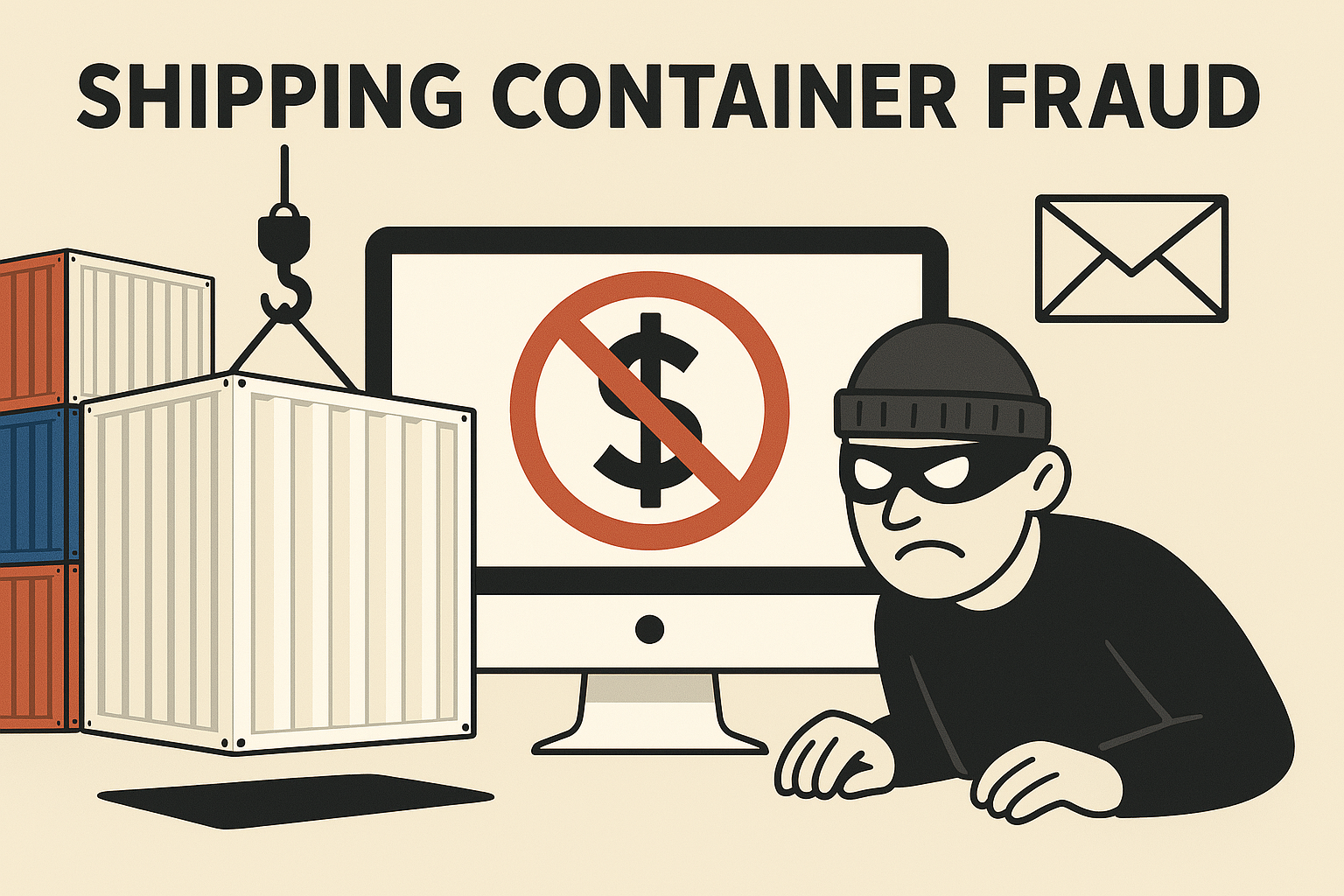
How to Avoid Shipping Container Scams: A Seablox Guide to Safe Buying
As demand for shipping containers continues to grow—for everything from storage to custom buildings—so do the number of fraudulent sellers looking to take advantage of unsuspecting buyers. At Seablox, we’ve seen too many people fall victim to scams that could have been avoided with a few simple precautions. Here’s our expert guide to help you buy with confidence and avoid getting burned.
1. Verify the Company’s Address
A legitimate shipping container supplier will have a physical business location that you can look up and verify. Don’t just take the website’s address at face value—search for it yourself on Google Maps. Check street view, look for signage, and confirm that it’s actually a business location, not a residential address or empty lot.
2. Check the Website and Contact Information
A professional-looking website doesn’t automatically mean a company is legit. Make sure their contact information is clear, including a phone number, email, and address. Look for signs of credibility like a business registration number, HST number, and proper grammar throughout the site. If something feels off or too generic, dig deeper.
3. Confirm a Valid HST Number
In Canada, a valid HST (Harmonized Sales Tax) number is a must for any legitimate business collecting tax. Always request an invoice with an HST number, and verify it online through the CRA’s GST/HST registry. If the number is fake or missing, it’s a big red flag.
4. Request a Formal Invoice
A trustworthy seller will always provide a clear and professional invoice before payment, including the full business name, address, phone number, HST number, a breakdown of charges, and payment terms. If they’re hesitant or vague about invoicing, walk away.
5. Read Customer Reviews
Always check Google Reviews, BBB (Better Business Bureau), or other review platforms to see what others are saying. A legitimate company will have a consistent track record of positive feedback. Watch out for companies with no reviews or only a handful that seem suspiciously generic or overly positive.
6. Be Cautious with Deposits
For standard shipping containers, reputable sellers typically don’t require a deposit upfront. If you’re being asked to send a deposit to “hold” a basic container, especially by e-transfer or wire, consider that a warning sign. Custom containers or large orders may require a partial payment, but this should always be backed up by a legitimate contract and invoice.
7. Don’t Send Payment Until You’re Absolutely Sure
This is the most important rule: Never send money unless you’re 100% confident in the company. If something doesn’t feel right—whether it’s the communication, the website, or the payment method—pause and do more research. A legitimate company will understand your caution and support your due diligence.
Final Thoughts
Scammers are getting more sophisticated, but by following these simple steps, you can confidently avoid fraud when buying shipping containers online. At Seablox, we’re committed to transparency, integrity, and customer education. If you’re ever unsure, feel free to reach out—we’re happy to help verify information and guide you through a safe purchase.
